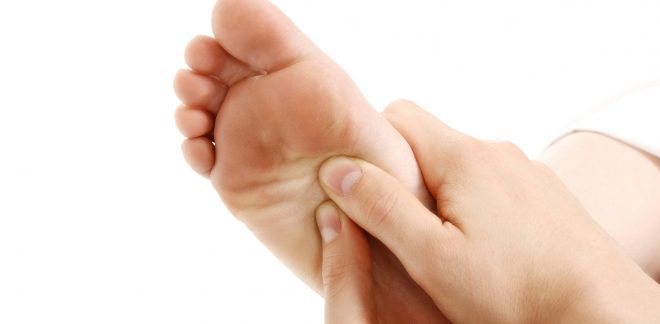
Clinic News
It's the final countdown....
After the postponement of the tree planting for tomorrow due to the water-logged pitches and the inability of the Ground Workers to prepare the site, we are hopeful that weather permitting we will be able to reschedule our event for Saturday 25th November from 2 pm. Please pencil this in your diaries and look out for a final confirmation nearer the time.
Saturday 18th November the team will be off to Birmingham to the BCA conference and gala dinner where we hope to hear whether we have been awarded the clinic of the year award - fingers crossed. During the day, Julie and Nat will be taking part in Operation Excellence: The Ultimate Masterclass - we are hoping they will be bringing some valuable gems to our front-of-house procedures. Find out next month what they got up to and how the ideas have impacted the clinic!
Thank you to all patients who completed the patient satisfaction questionnaire in September - this was available for just a two-week period which we were able to collect a snapshot of data from patients to help us demonstrate the level of excellence we strive to deliver to you and well, you think we are doing pretty well - thank you. We have 152 participants and we value any comments and have acted on them as best we can.
Our winner of the chiropractic bundle is Andrew Stone - congratulations to him - your prize awaits you, Andrew!
All results are available on our website: https://www.beestonchiropractic.co.uk/how-are-we-doing/
This month we talk about feet - yep feet - did you know chiropractors treat feet? Check out the articles below.

Chiropractors also treat feet!
Amongst other things, chiropractors frequently also treat the hips, knees and feet…
In an average lifetime, our feet carry us an equivalent of five times around the Earth. In addition to this, the feet must take the strain of supporting the body’s weight even when just standing still. Given how often we use our feet, and the demands we make upon them on a day to day basis, it’s important to look after them properly.
Each foot is made up of a total of 26 bones, and damage to any one of them, or related muscles, ligaments or cartilage can result in problems with the foot that may need attention from a trained professional in order to prevent longer term damage.
Follow these tips for keeping your feet in good condition:
- You should inspect and feel your feet daily for cracks, corns and ulcers
- Toenails should be cut straight across, not too close to the skin.
- Take extra care when walking barefoot.
- A well fitting shoe should not require a long and painful breaking in period.
- Pay good attention to your feet; changes and/or pain in the feet and ankles could indicate a more serious foot ailment or circulatory problem, so if in doubt, check with your chiropractor.

Tips for Managing Stress and Anxiety
At some point, anxiety and stress affect everyone. They can manifest differently in different people, but there are ways to manage anxiety and stress, even if it feels out of control. Let’s dive into some practices to help you feel calmer and happier.
Embrace the Present Moment
Imagine this: you’re sipping your tea, but your mind is racing with thoughts about the past or worrying about the future. Sound familiar? By practising mindfulness, you learn to appreciate the present moment. So, take a pause, breathe in the lovely aroma, and fully immerse yourself in the sensory experience of your tea time.
Create a Serene Space
Having a tranquil space is crucial. It could be a cosy corner in your living room, a peaceful spot in your garden or your work desk. Personalise it to your liking with comfortable cushions, scented candles and items that bring you joy. Make it your sanctuary, where you can escape the chaos and find inner calm.
Take Small Steps
Just like mastering any skill, meditation takes practise. Begin with short sessions—just five minutes a day—and gradually increase the duration as you strengthen your mental muscles. Remember, finding inner peace is a journey, not a sprint.
Focus on Your Breath
Close your eyes, take a deep breath, and exhale slowly. Pay attention to the sensation of your breath entering and leaving your body. Let it be your anchor to the present moment. When distracting thoughts pop up, gently acknowledge them and refocus on your breath.
Engage in Mindful Movement
Who says mindfulness is limited to sitting still? Explore mindful movement practises, such as a leisurely walk in nature or gentle yoga. Feel the ground beneath your feet, listen to the sounds around you, and relish the joy of being in motion. Let your worries dissipate with each step.
Cultivate Gratitude
In the whirlwind of daily life, we often overlook the small blessings. Take a moment each day to express gratitude for the simple joys. It could be the warmth of a loved one’s smile or the aroma of freshly brewed coffee. Write them down in a gratitude journal and let gratitude brighten your days.
Find a Mindfulness Buddy
Sharing is caring, especially when it comes to mindfulness. Join a local meditation group or invite a friend or family member to embark on this journey with you. Share tips, meditate together, and revel in the joy of connecting with others who share your quest for inner peace.
Remember, managing anxiety and stress is a lifelong pursuit, and every small step contributes to your overall well-being. Embrace the power of the present moment, breathe deeply and let your worries float away.

The Dangers of High Heels
With party season approaching, ladies are likely to be high heel searching! However, there are many problems associated with wearing high heels. Beyond the traditional parental warning of “you’ll break your ankle in those!”, there are many other issues, seen every day by professionals, that are caused by high heel wearing.
High heels are the worst possible shoes for your feet. When heels are excessively high, the ball of your foot absorbs the full amount of pressure on your foot and the weight of your body on this one area can cause a huge range of problems, including bunions, aching and tired feet, and a burning sensation in the balls of your feet.
As the fashion for higher and higher heels grows, as does the range of foot problems occurring. Conditions such as bunions are becoming more prevalent as women opt for skyscraper heels and the higher the heel, the greater the risk of falling and causing serious injury.
The height of the heel is directly proportionate to the increase in pressure on the ball of the foot and to how short each stride becomes.
It’s not uncommon to hear notorious high heel wearers complaining of bunions. High heels, especially those with pointed toes, force your foot to slide forwards, so that all the weight of your body is on this part of your foot. This crams your toes together and pushes your big toe in toward your other toes. Over time, this repetitive action can cause a permanent distortion, called Hallux Valgus as your foot tries to change its shape to fit such shoes. To protect the area a fluid filled sack builds up over the area called a bunion, when this becomes inflamed it can be very painful.
Wearing high heels can also cause issues beyond your feet. High heels cause the calf muscle fibres to shorten, even when not wearing heels. If you wear heels most of the time, your foot and leg positioning that is adopted in heels becomes the default position for your joints and the structures within your leg and foot.
Advice is not to wear heels or flat shoes all the time, but both in moderation. Wearing a variety of heel heights will help you to get your calf muscles used to change. Also, if you wear heels day-to-day, kick them off wherever possible to allow your foot to relax back to a better position. So, enjoy heels during party season but give your feet some TLC, too, allowing them time to recover between festivities.

Good nutrition for bones muscles and joints
Choosing a balanced diet containing the right vitamins and minerals decreases our chances of developing deficiencies later on in life. Try this healthy diet plan for optimum bone, muscle and joint health.
A Healthy Diet Plan
Calcium
For bone, muscle and joint health try and include calcium in your diet, which is essential for optimal nerve and muscle function and blood clotting.
Obtained from:
Dairy products are rich in calcium that is easy to absorb. Non – dairy sources with equally absorbable calcium are green leafy vegetables from the kale family. Spinach, rhubarb, sweet potatoes and dried beans are rich in calcium but from these foods it’s not easily absorbed.
Magnesium
Required for efficient muscle contraction and conduction of nerve impulses. Low magnesium levels in the body can affect the body’s calcium levels, putting bone health at risk.
Obtained from:
Green leafy vegetables, unrefined grains and nuts. Small amounts are present in meat and milk. Large quantities of fibre in the diet and low protein intake can reduce the amount of magnesium able to be absorbed by the body.
Vitamin D
Essential for regulating the formation of bone and the absorption of calcium from the intestine. Vitamin D is a fat-soluble vitamin that functions to help control the movement of calcium between bone and blood.
Obtained from:
Primarily from the action of UVB light (sunshine) on the skin. Food sources such as cod liver oil, sardines, salmon, tuna, milk and milk products contain small amounts of Vitamin D.
Vitamin C
The structure of bones, cartilage, muscles and blood vessels is provided in part and maintained by collagen. The formation of strong efficient collagen requires Vitamin C.
Obtained from:
Citrus fruits, berries, tomatoes, cauliflower, potatoes, green leafy vegetable and peppers. Also important for producing strong collagen and therefore strong bone structure, is Folic acid. Folic acid is found in cereals, beans, green leafy vegetables, orange and orange juice.
Antioxidants
Vitamin C is also a strong antioxidant and is capable of regenerating other antioxidants like vitamin E. The role of antioxidants is to mop up free radicals (the by-products of normal metabolism). Excessive amounts of free radicals cause damage to joint surfaces and muscle cell regeneration. Antioxidants reduce the potential of these free radicals to cause joint damage.
Obtained from:
Antioxidants are vitamins A, C, E and the mineral selenium and are present in fruits and vegetables, the highest quantities are found in the most deeply and brightly coloured. Cartilage that lines the articulating surfaces of all joints is critical to joint health. Cartilage is the shock absorber of joints and is continually rebuilt if a source of raw materials is available. Supplements such as glucosamine sulphate can be added to a healthy diet to assist joints that maybe showing signs of wear and tear.
Essential fatty acids
Essential fatty acids (EFA’s) also reduce the degenerative changes in tissues and cells and help guard against some cancers. EFA’s are unsaturated fatty acids. They aid in decreasing the inflammatory response and help relieve pain and discomfort in joints and muscles.
Obtained from:
EFA’s, such as Omega 3, can be found in oily fish, (sardines, herrings, mackerel), and seeds.
Foods to avoid…
There are certain foods and substances that adversely effect the body’s use of minerals and vitamins. High saturated/animal fats, refined foods, white flour, white sugar, white rice, chocolate, carbonated drinks and fruit juices with high sugar concentration should be kept to a minimum if not weaned from the diet completely. Meat and dairy products should be kept within a recommended weekly amount. Dairy products as calcium sources should be varied with other non-dairy sources.
We treat all conditions that affect any muscle or joint in your body, from your head to your little toe! One of the most common complaints that we treat is back pain and Chiropractic is recommended by the government authority, the National Institute for Clinical Excellence (NICE) for acute and chronic back pain. Some of the other conditions that we treat are neck and headache, shoulder pain, leg and hip pain, knee and foot pain, sciatica and arthritis. Our registered Chiropractors all have at least five years of training. Treatment costs can be covered through most health insurers. If you are in any doubt, we are always very happy to talk with you on the phone to see if your condition will respond well to Chiropractic treatment. Call the clinic now to arrange an appointment time that works for you. 0115 9225085 If you would like to opt-out of receiving these newsletters please follow the unsubscribe link below, email alex@beestonchiropractic.co.uk or let us know at your next appointment.





